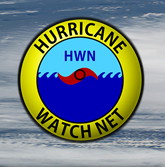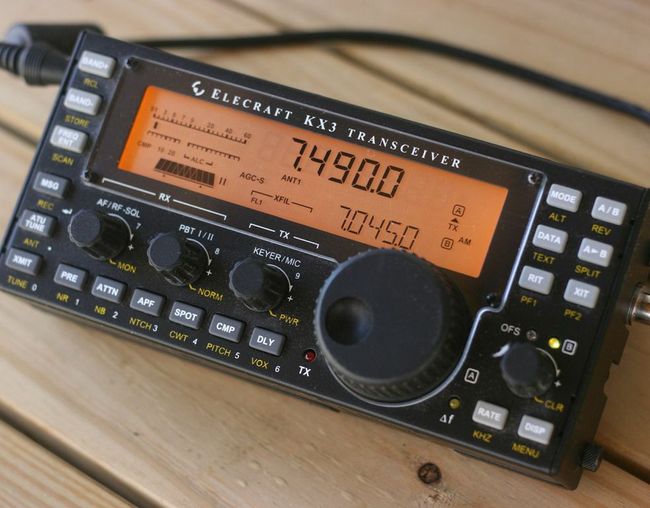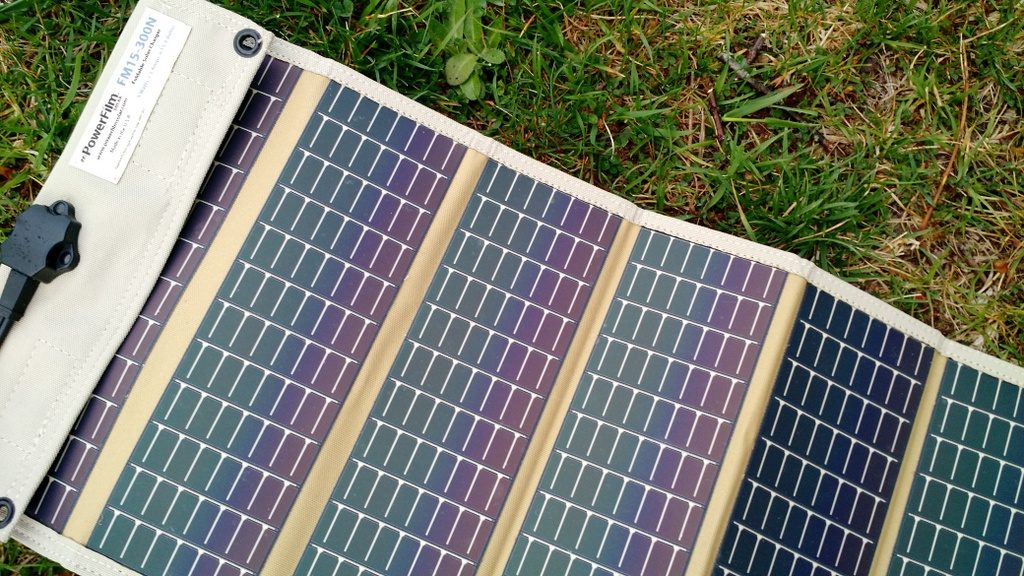(Source: NPR via Eric, WD8RIF)
Volunteer HAM operators have set up informal radio networks to connect family and friends with their loved ones in Puerto Rico. NPR’s Kelly McEvers talks to one of those volunteers, Greg Dober.

(Source: NPR via Eric, WD8RIF)
Volunteer HAM operators have set up informal radio networks to connect family and friends with their loved ones in Puerto Rico. NPR’s Kelly McEvers talks to one of those volunteers, Greg Dober.
(Source: CNN)
(CNN)The phone call from the Red Cross came in late Friday night, just as the full scale of Hurricane Maria’s calamity began taking shape.
“We need 50 of your best radio operators to go down to Puerto Rico.”
In the days after the worst storm in three generations hit the American island — and for many more to come — public electrical, land-line and cellular communication systems showed few signs of life. And radio networks used routinely by police officers, power company workers and other first responder still were down.Yet, a key mode of communication — one not reliant on infrastructure vulnerable to strong winds and flooding — still crackled: the “ham” radio.
Answering the phone that night in Connecticut was the emergency manager for the American Radio Relay League, the group’s CEO said. For more than a century, this group has served as a hub for amateurs licensed to operate the dependable, if archaic, medium known as ham radio and eager to pitch in when disaster strikes.
When the Red Cross made its latest appeal for heroes, these were the people it had in mind.
(Source: The Washington Post via David Korchin)
As Hurricane Harvey dropped anchor over Southeast Texas last week, Zello became the go-to app for rescuers working to save thousands of people trapped by floodwaters.
Within days of Harvey’s arrival, the app saw a 20-fold increase in usage in Houston, according to Bill Moore, the Austin based startup’s the chief executive.
As Hurricane Irma hurtles across the Caribbean toward the coast of Florida, Zello continues to boom in popularity. The free Internet “walkie-talkie” app — which relies on cellphone data plans or WiFi and is designed to operate in places where signals are weak — became the top app on iTunes and Google Play Wednesday.
The latest influx began Tuesday and, at one point, Moore said, 120 people were registering for the app every second. In recent days, the app has also trended on Facebook and Twitter, offering another example of the pivotal role social media is playing in natural disasters.
“The heat map of where the registrations are occurring looks like the hurricane’s forecast path,” he added. “It’s very dense at the tip among the Caribbean islands and then fans out across Florida.”[…]
Continue reading at The Washington Post online.
I find Zello quite interesting. If you think about it, this app mimics the concept of traditional PTT/two-way radio which certainly has traffic management advantages during times of emergencies. Of course, Zello has many features traditional two-way radio does not (voice history, the ability to leave messages, native GPS and mapping functionality, etc.).
Zello does rely on some sort of Internet connectivity via 4G, 3G, WiFi, GPRS and/or EDGE. During disasters, these services may not always be accessible. Of course, amateur radio, CB and other traditional radio services do not require Internet connectivity.
Zello requires no license, no radio, nor any other accessories–just a smart phone–and is free. That’s a powerful combination and, as The Washington Post reports, Zello is obviously helping with Irma relief efforts. Thanks for the tip, David!
Many thanks to SWLing Post contributor, Nigel Holmes, for sharing a link to the public submissions for the Australian Broadcasting Corporation Amendment (Restoring Shortwave Radio) Bill 2017.
Click here to read submissions.
On a separate note, Nigel also sent info about the SES (State Emergency Service) in Australia. I didn’t know about this service. Nigel notes:
SES is State Emergency Service, we provide volunteer responses to storm, flood, land search, vehicle accident response (in rural areas).
All AUS emergency response services use HF–ditto sailors, private pilots, bushwalkers (hikers).
Individuals can get an Outpost license (400 W PEP) or Land/Marine Mobile license (125 W PEP) for $20 a year to use HF across the country for private or commercial communications. Cheaper than an amateur license ($60 /yr)!
As Hurricane Matthew makes its slow trek through the Caribbean, it is expected to have impact on the Bahamas, Florida, South Carolina and North Carolina. It has already battered Haiti and Cuba.
A few readers have asked about frequencies to monitor as the storm approaches.
 The Hurricane Watch Net is a group of amateur radio operators who are trained and organized “to provide essential communications support to the National Hurricane Center during times of Hurricane emergencies.” The HWN focuses on “ground truth” observations (much like SkyWarn nets).
The Hurricane Watch Net is a group of amateur radio operators who are trained and organized “to provide essential communications support to the National Hurricane Center during times of Hurricane emergencies.” The HWN focuses on “ground truth” observations (much like SkyWarn nets).
The Hurricane Watch Net is activated when a hurricane is within 300 statute miles of expected land-fall. The HWN covers the Caribbean, Central America, Eastern Mexico, Eastern Canada, and all US Coastal States.
The HWN operates in both English and Spanish, and is active on 14.325 MHz (upper sideband) during the day and 7.268 MHz (lower sideband) at night. The HWN is known to operate on both frequencies if propagation allows.
If you’re an amateur radio operator, please avoid using 14.325 MHz and 7.268 MHz anytime the HWN has been activated.
ARRL Southern New Jersey Section manager, Skip Arey (N2EI), recently noted several other frequencies being used in the Caribbean:
“CO2KK reports the Cuba National Emergency Net is operating on 7110 primary, 7120 secondary in the daytime, with provincial nets on 7045, 7080 and possibly others. At night the primary is 3740 and secondary 3720. The main net control station is CO9DCN, operating from the Cuban National Civil Defense Headquarters, in Havana, with CO2JC in charge. Volunteer hams across the island nation are going portable to check on flooding of rivers and roads and plan to report in.
The Dominican Republic on Cuba’s eastern neighbor, the island of Hispaniola, is using 7065 kHz LSB for emergency communications.”
Please note these frequencies and, again, keep them clear of non-essential communications.
If you have a shortwave radio with a BFO/SSB mode–and you live within the propagation footprint–you can monitor the Hurricane Watch Net.
Note that you’ll need to use upper sideband on 14.325 MHz and lower sideband on 7.268 MHz.
You can also monitor the Hurricane Watch Net via the following web stream: http://www.broadcastify.com/listen/feed/20970/web
(Source: ARS Technica)
by Rupert Goodwins
It’s a good time to be technical. Maker communities are thriving around the world, tools and materials to create and adapt are cheaper and more powerful now than ever, and open source hardware, software, and information mean that if you can think it, you can learn how to do it and then make it happen.
For one group of technological explorers, this is more than just a golden age of opportunity: it’s providing the means to save one of the oldest traditions in electronic invention and self-education, one that helped shape the modern world: amateur radio. That matters.
Radio amateurs get a sweet deal, with effectively free access to many gigahertz of the same radio spectrum that companies pay billions for. They’ve earned it. Throughout the history of electronics, they’ve been at the borders of the possible, trying out ideas that commerce or government deem impossible or pointless—and making them work. One example of hundreds: Allied military comms in World War II needed a way to reliably control the radios used by front-line forces, replacing tuning knobs with channel switches. Hams had the answer ready and waiting: quartz crystal oscillators. (That’s part of computing history too—you’re probably using about ten of them right now.).
[…]Then, there’s backup. Take the European HAMNET, for example. That’s a four-thousand-node high speed data network covering a large part of continental Europe and providing full IP connectivity at megabit speeds. It connects to the Internet—ham radio owns 16 million IPV4 addresses, believe it or not—but is independent of it, doing its own robust and flexible routing. If the Internet was to go away, HAMNET would still be running. The same’s true of nearly all ham radio infrastructure: when everything else fails—power, comms, roads—ham radio is still there, and these days it can be a full-fat digital medium.[…]
 This year, I have a lot of portable radio play in mind as I travel across the continent. At some point, I even plan to spend several days in an off-grid cabin on the coast.
This year, I have a lot of portable radio play in mind as I travel across the continent. At some point, I even plan to spend several days in an off-grid cabin on the coast.
In the past, I’ve powered my 12 VDC ham radio transceivers with a system comprised of three PowerFilm solar 5 watt foldable PV panels (see below), a Micro M+ charge controller and several gel cell type sealed batteries (a couple 7 Ah and one 20 Ah).
The system works well, but the batteries are a little heavy and unhandy when I want to hike into a remote site or play radio on the beach, for example.
In terms of receivers, my portables (like the Sony ICF-SW7600GR, Tecsun PL-660, etc.) simply use AA batteries which I charge with PowerFilm AA PV chargers (see above). My CommRadio CR-1a has an internal battery that will power it for hours at a time.
Power is much less of an issue with receivers because they’re quite resource efficient.
I mainly need a system to power my QRP ham radio gear, and that’s where I could use your experience!
Charge controller
I need a new charge controller since my Micro M+ (no longer produced) is now being used to power a remote antenna tuner.
Of course, I’ll need an inexpensive charge controller that doesn’t produce RFI (radio interference).
It would be an added bonus if the charge controller could also charge my batteries when grid power is available.
12 VDC Battery packs
I’d like something relatively lightweight and safe.
Note: LiPo packs worry me, especially since I had one (an early GoalZero model) quite literally melt down and burn up on my bed only a few hours after bringing it back from an eight hour flight a few years ago. Scary!
Pure Sine Wave Inverter
I’d also like a small, efficient pure sine wave inverter that I I could connect to my largest battery and power my laptop for extended SDR spectrum recording sessions while off-grid.
I’d love a recommendation from someone who uses one and can confirm a model that doesn’t create radio interference while operating.
Post readers: Please comment with your recommendations and include model numbers and links if possible. Thank you in advance!